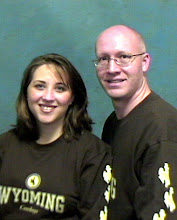It is cold and snowy again- the temperature is supposed to hover right around zero degrees for the next couple of days. I am ready for spring to arrive- I'm sure it will, eventually. Even though it is cold and snowy I am getting excited for bee season.
I found this really cool map tool that can be used to draw a radius of any distance around your hives so you can see the potential foraging area of your bees. Click right here to follow the link and use the map tool.
In the image below I have drawn a 1.5 mile radius around my 2 hives. 
The green rectangles indicate known alfalfa fields for seed production that blossom continuously throughout the summer. The orange outline indicates where there is a large concentration of Russian olive trees along the river bottom. They bloom for about a week and provide a good source of nectar and pollen. The blue line cutting across the map indicates the approximate location of a canal which is a potential water source for the bees as well as providing habitat for more Russian olives. Last year the alfalfa bloom and the Russian olive bloom occurred at the same time on about June 20th.
There are other nectar sources within the radius besides those outlined on the map. There are lots of other alfalfa fields which are cut for hay. Our farmers usually get 3 or 4 cuttings each summer and it seems like the alfalfa blooms for several days to a week before the fields are cut. There are also lots of pastures which contain dandelions, clover, other wildflowers, and even nectar producing weeds. This all combined for a total of 15 gallons of honey harvested from our two hives at the beginning of last September.
I'm sure the bees will travel further than 1.5 miles to collect nectar and pollen. I just suppose that the majority of our honey production comes from nectar collected within this radius. There was a study performed right here in Wyoming to determine exactly how far bees would travel. The study found that bees would travel up to 7 miles to forage- but at that distance they consumed more honey in order to travel the 7 miles than they were able to produce. The max distance the bees could travel and still produce excess honey was 4 miles. You can read a short article about that study by clicking right here. It really is quite interesting. But right now it is time to shovel the walks one more time.
Record Honey Harvest!
5 years ago



1 comments:
Thanks - interesting - I've added a link to your blog on Bees Hive - everything Bee
http://thebeeshouse.blogspot.com/
Post a Comment